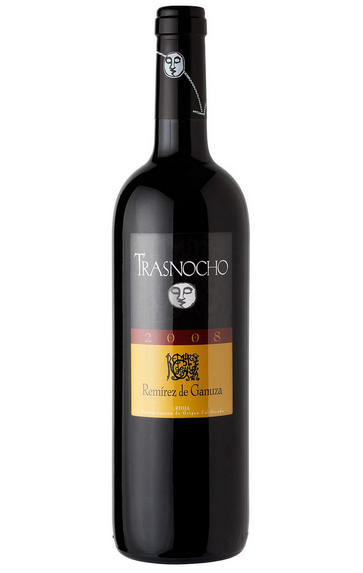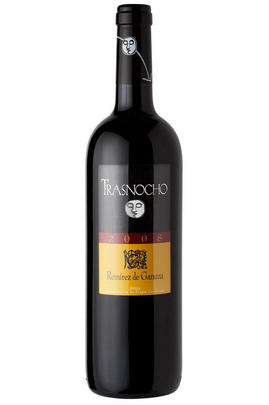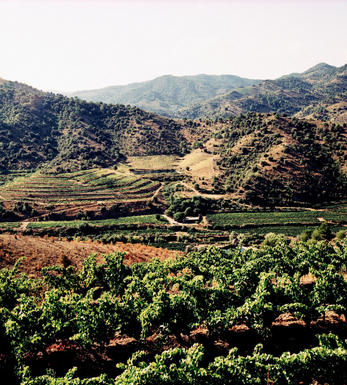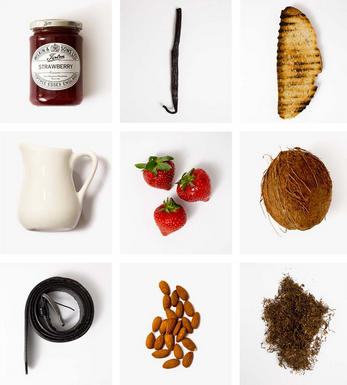
2007 Trasnocho, Bodegas F. Remírez de Ganuza, Rioja

Critics reviews
The Trasnocho is made from the same fruit as the Reserva, but is pressed gently through a water-filled bag inserted into the vat and left to inflate overnight. It is then raised entirely in French new oak.
Fernando Remirez de Ganuza needs no introduction. In some ways, he reminds me of Gerard Perse of Chateau Pavie in terms of his determination, unwillingness to compromise and singular vision. Looks-wise, they could be brothers. Fernando has already won acclaim for his wines that are created in his state-of-the-art facility in the village of Samaniego. The picturesque medieval buildings that surround a small manicured garden and a natural spring belie a winery where no expense is spared. Fernando has an almost obsessive intolerance towards cleanliness and hygiene. All that was missing was a doormat to clean your shoes as you enter the vat-room.
He famously uses just the “shoulder” part of grape bunches for his top wines, since he believes they have more intensity than the bottom. These wines are crafted in a modern fashion and you can taste the effort that has gone into them. Yet at the same time, there is part of me that would like Fernando to take risks and be wary of not over-analyzing the wines, which can detract from their personality and risk making them over-polished and generic. Perfectionism is an admirable virtue to aspire to, but imperfections can make something more interesting to experience.
About this WINE

Bodegas F. Remirez de Ganuza
Bodegas F. Remírez de Ganuza is situated in the middle of the lovely village of Samaniego in the Rioja wine region. The splendid country mansion consists of a block of buildings and is equipped with modern reinforced concrete structures faced with masonary stone blocks which are between two and three hundred years old.
This block encloses a spacious, quiet yard, crossed by a canal of running water, which as well as making the place feel cool, ensures the water supply in the event of problems with the local mains supply. The inner roof is made of hundred year old oak beams and the solid wood doors are the only concession to tradition in one of the most ultra-modern wineries in the whole of Spain.
Fernándo Remírez de Ganuza is one of the big characters in Rioja. A former Rioja wine broker, he set up his eponymous bodega in 1989, using his contacts and knowledge to invest in 70 hectares of the best possible vineyards in the Rioja Alavesa: Samaniego, Leza, Elciego and Laguardia. In Remirez de Ganuza, they work with fifty hectares of Tempranillo (90%) and Graciano (10%) situated in truly privileged enclaves of the Alaves vineyards. His philosophy inclines towards modernism with 80% French and 20% American oak, all new, used to age his wines, which are now justly celebrated throughout the world.
Two range of wines are produced: The flagship wine is the Remírez de Ganuza Rioja Reserva with a yellow label (highly acclaimed in the US market), and another Rioja Reserva, but distinguished from the estate's top wine by the Fincas de Ganuza designation (red and yellow label).
The vine stocks have an average age of sixty, with the youngest being thirty years old and oldest, ninety-six, an ideal average for making a wine with "breeding". The skill and exprience of Remirez de Ganuza in growing practises has allowed him to consolidate one of the basic pillars of the Bodega: sourcing the grape supply. Only the best grapes for the best wine.His philosophy inclines towards modernism with 80% French and 20% American oak, all new, used to age his wines, which are now justly celebrated throughout the world.

Rioja
Rioja is known primarily for its reds although it also makes white wines from the Viura and Malvasia grapes and rosés mainly from Garnacha. Most wineries (bodegas) have their own distinct red wine formula, but are normally a combination of Tempranillo, Garnacha and sometimes Graciano. Other red varieties recently approved into the Denominación de Origen Calificada (DOCa) regulations are the little-known Maturana Tinta, Maturana Parda, and Monastel (not to be confused with Monastrell). The most important of these by far is the king of native Spanish varieties, Tempranillo, which imbues the wines with complex and concentrated fruit flavours.
The Garnacha, meanwhile, bestows its wines with warm, ripe fruit and adds an alcohol punch. Graciano is an améliorateur grape (one that is added, often in small proportions, to add a little something to the final blend) and is found mainly in Reserva and Gran Reserva wines, albeit in small quantities (two to five percent), adding freshness and aroma, and enhancing the wines' ageing potential.
Crianza wines are aged for one year in oak followed by maturation for one year in bottle before being released for sale. Reservas must undergo a minimum of three years’ ageing before release, at least one of which should be in oak casks. Finally, Gran Reservas, which are only produced in the finest vintages, must spend at least five years maturing, of which at least two must be in oak.
Geographically, Rioja is divided in to three districts: Alavesa, Alta and Baja. Rioja Alavesa lies in the northwest of the La Rioja region in the Basque province of Álava. Along with Rioja Alta, it is the heartland of the Tempranillo grape. Rioja Alta, to the north-west and south of the Ebro River in the province of La Rioja, stretches as far as the city of Logroño. Elegance and poise is the hallmark of wines made here with Rioja Alta Tempranillo. Mazuelo (Carignan) is occasionally added to wines from this area to provide tannins and colour. Rioja Baja, located to the south-east, is the hottest of the three districts and specialises in Garnacha.
Rioja has witnessed a broad stylistic evolution over the years. The classic Riojas pioneered by Murrieta and Riscal in the 19thcentury were distinguished by long oak-barrel-ageing whereas the modern style, represented by Marqués de Cáceres since 1970, showcases the fruit and freshness of Tempranillo, keeping oak ageing to the legal minimum. The post-modern school that emerged in the late 1990s from producers like Palacios Remondo and Finca Allende concentrate on making wines from old vines or specific vineyard plots to accentuate the terroir, and using larger proportions of minority varietals such as Graciano.
The alta expression wines, pioneered by Finca Allende (among others) and later taken up by almost every other producer in Rioja, represent the newest flagship category in Rioja. Alongside the traditional Gran Reservas, alta expression wines are limited production and come from low-yielding vines, often from a single vineyard, and are hand-picked. Excellent examples of this style are Artadi's Pagos Viejos and El Pison.
However, modernisation has not held back the continuation of successful traditional styles as well. Happily long-established houses such La Rioja Alta, CVNE and Marques de Vargas continue to make graceful, old style wines better than ever before.
White Rioja is typically produced by the Viura grape which must comprise at least 51 percent of the blend; the rest can be made up by other, recently-authorised varieties, namely Sauvignon Blanc, Chardonnay and Verdejo, as well as the native Maturana Blanca, Tempranillo Blanco, and Turruntés (not to be mistaken for Torrontés).
Recommended Producers:
Finca Allende, Amezola de la Mora, Artadi, CVNE, Marqués de Vargas, Palacios Remondo, La Rioja Alta, Murrieta.

Tempranillo/Tinto Fino
A high quality red wine grape that is grown all over Spain except in the hot South - it is known as Tinto Fino in Ribera del Duero, Cencibel in La Mancha and Valdepenas and Ull de Llebre in Catalonia. Its spiritual home is in Rioja and Navarra where it constitutes around 70% of most red blends.
Tempranillo-based wines tend to have a spicy, herbal, tobacco-like character accompanied by ripe strawberry and red cherry fruits. It produces fresh, vibrantly fruit driven "jovenes" meant for drinking young. However Tempranillo really comes into its own when oak aged, as with the top Riojas where its flavours seem to harmonise perfectly with both French and American oak, producing rich, powerful and concentrated wines which can be extraordinarily long-lived.
In Ribera del Duero it generally sees less oak - the exception being Vega Sicilia where it is blended with Cabernet Sauvignon and Merlot and then aged for an astonishing 7 years in oak and is unquestionably one of the world`s greatest wines.


Buying options
Add to wishlist
Description
The nose is layered and brooding with notes of cacao, predominantly black fruit (blackcurrant, blackberries and loganberries) as well as crushed violets which add an extra dimension. The palate reveals a robust tannic framework, ripe fruit with the introduction of blueberries and a finish which is long and refined with a faint hint of Sherry to give it lift.
Simon Field - Wine Buyer
wine at a glance
Delivery and quality guarantee